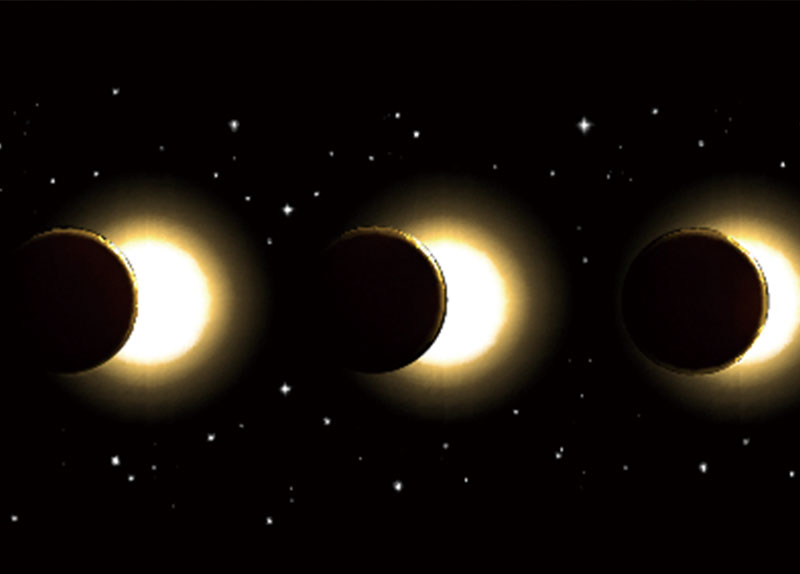
On Apr. 8 this year, North America witnessed a rare total solar eclipse. The phenomenon occurs roughly every 18 months somewhere on Earth when the Moon positions itself between the Sun and our planet, completely obscuring the face of the Sun. This alignment casts a shadow, called the umbra, onto Earth’s surface.
According to NASA, the 2024 total eclipse differed from the previous event that swept across the U.S. in 2017 due to the closer distance between the Moon and the Earth this year. The maximum length of totality was much longer this year (four minutes 28 seconds), and the width of the path of totality was much larger (185 km), allowing many millions more to experience the celestial spectacle. For those within this path, daytime briefly turned into night as the Moon’s silhouette enveloped the Sun.
Throughout history, solar eclipses have evoked a myriad of interpretations. Ancient civilizations, such as the Babylonians and the ancient Greeks, noticed the recurring patterns in celestial movements and tied various predictions to eclipses. Beliefs about eclipses motivated ancient astronomers to create tools to predict the timing of future eclipses.
In modern times, our study of solar eclipses has transcended superstition as our understanding of the universe evolved. Pioneering astronomers have even made groundbreaking discoveries through their examinations of the event. In 1919, by observing the bending of starlight during a total solar eclipse, researchers confirmed Einstein’s predictions, affirming Einstein’s theory of general relativity.
Solar eclipses continue to captivate humanity, fostering collaboration and new initiatives. NASA, for example, has initiated a citizen science project called the Eclipse Megamovie, which harnesses the photos taken by observers worldwide to study the solar corona.